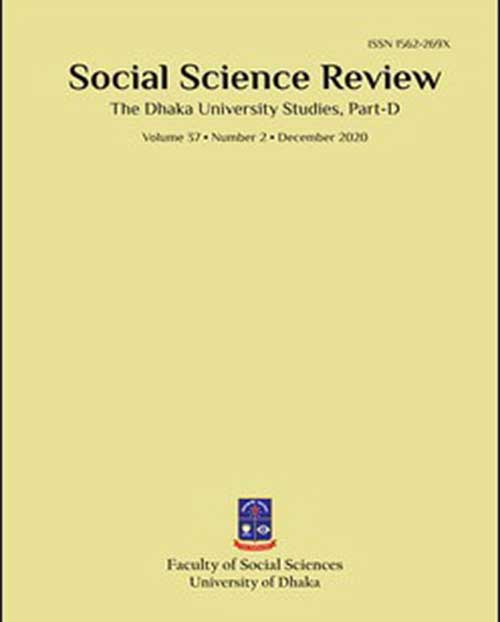BENGALI NATIONALISM AND IDENTITY CONSTRUCTION IN FAGUN HAWAY (IN SPRING BREEZE, 2019)
Reffat Ferdous, Saiyeed Shahjada Al Kareem
Published Date : 01-Jan-2023
Social Science Review
Vol. 40 No. 1 (2023)
DOI:
ISSN 1562-269X
Vol. 40 No. 1 (2023)
DOI:
ISSN 1562-269X
Abstract
The years 1948-1952 were pivotal for the history of Bangladesh. The question of what would be the state language was raised by the people of this country. Muslim leaders in Pakistan, at the time, believed that Urdu should be the state language because it had become recognized as the cultural symbol of sub-continental Muslims. However, most of Pakistan’s population, the Bengalis of eastern Pakistan, to whom Urdu was a foreign language, considered it a ploy by the West Pakistanis to colonize East Pakistan. Protests erupted across East Pakistan after the then Prime Minister of Pakistan replaced Bangla as the state language with Urdu. On February 21, 1952, a student protest resulted in the deaths of some students by police. The language movement drew Bengalis’ attention to their collective aspirations to create a new nation and nationalist identity, leading them to fight for an imagined sovereign state, Bangladesh. Against the backdrop of our language movement, Fagun Haway (In Spring Breeze, 2019), a film by Tauquir Ahmed, captures the anecdotes of Pakistani repression towards Bengalis by portraying the nationalist consciousness and identity approaches of this nation. Employing the concept of nationalism and the historical development of our identity approaches, this paper shows that Ahmed displays the coexistence of Bengali and Muslim identity approaches as well as the contentious relationship between these two approaches inside our nationalism at that time. Besides, Bengaliness is viewed as the dominating approach when the debate over the state language turns into a divisive political one and a fight for our very existence.
Keywords Bengali Nationalism,
Identity Approaches, Language Movement
Download PDF


